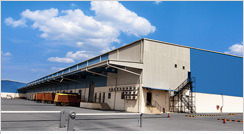


Tel: +86 189 6693 5266
Fax: +86 29 8263 6374
Skype: frankzhang051001
Wechat: frankzhang051001
WhatsApp: +86 189 6693 5266
QQ: 312813330
Email:
Magnesium is the lightest structural metal and exhibits excellent machinability. Some of the advantages of machining magnesium compared to other commonly used metals include:
•Low power required – approximately 55% of that required for Al.
•Fast machining – employing the use of high cutting speeds, large feed rates and greater depths of cut.
•Excellent surface finish – extremely fine & smooth surface achieved.
•Well broken chips – due to the free-cutting qualities of magnesium.
•Reduced tool wear – leading to increased tool life.
To fully exploit and enjoy the advantages of machining magnesium, it is important that the unique characteristics of the metal are understood.
CUTTING POWER & MACHINABILTY
The mean specific cutting force (ks1.1) of magnesium is 280 N/mm 2 , this is much lower than that of aluminium (approx 640 N/mm 2 ). The result of this means that there is a reduced load on the cutter and tool body allowing higher cutting speeds and feed rates.
The power required to remove a given amount of magnesium compared to another metal is lower. An indication of the relative power required to machine various metals is shown in Table 1. The American Iron and Steel Institute (AISI) also ranked the machinabilty of metals, using high-speed steel (HSS) tooling and taking 160 Brinell B1112 steel as the arbitrary reference point, giving it a value of 100%. Any value greater than this indicates that the material is easier to machine and conversely any value lower indicates the material is more difficult to machine.
Table 1 – RELATIVE POWER & COMPARATIVE
MACHINABILITY OF METALS
|
Metals |
Relative Power |
AISI - B1112Machinability |
|
Magnesium alloys |
1.0 |
500 |
|
Aluminium alloys |
1.8 |
300 |
|
Steel alloys |
6.3 |
50 |
|
Titanium alloys |
7.6 |
20 |
SPEEDS, FEEDS & DEPTHS OF CUT
The potential for high speed machining of magnesium alloys is usually only limited by the stability of the component in the clamping device, chip extraction or the rotation speed or accuracy limits of the tool or machine. Some relative cutting speeds using HSS tools are given in Table 2. Cutting speeds are also dependant on the tool material. Higher speeds can be enjoyed with the use of carbide or poly-crystalline diamond (PCD) tooling.
In general, cutting speeds are between 200 – 1800 m/min with feed rates greater than 0.25 mm/rev for turning and boring operations. Face milling however, can be carried out at speeds up 3000m/min (10000 ft/min) with feed rates between 0.05 and 0.5 mm/tooth. Depths of cut can be up to 12mm. It should be noted that certain drilling, reaming and tapping operations are unsuitable for high speed machining.
Coarse feed rates should be employed in order to produce large chips rather than fine swarf. In general heavy feeds produce short well broken chips, medium feeds produce short partially broken chips and light feeds produce long curled chips. Well broken chips are desirable and are normally produced during the machining of magnesium.
The production of well broken chips helps with chip handling and housekeeping, this is especially beneficial when using automated or CNC machining. The production of fine swarf should be avoided due to the issues regarding flammability and the risk of ignition from the heat generated at the tool edge during cutting. Coarse chips help to take away heat from the cutting face and tool.
The surface finish of magnesium is not influenced by speed but is influenced by feed rate. If fine feeds are required for fine finishes the cutting speed should be reduced so to avoid excessive generation of heat. If fine swarf is produced, good housekeeping is essential - this is discussed in detail in the Swarf Handling section of this Datasheet. Cutting speed should also be used to control the temperature of the work piece. For example if a thinwall part is being machined, it could oscillate and rub on the tool causing friction and resulting in excess heat – the answer is therefore to slow down the cut.
The use of a lower speed will reduce the generation of heat without affecting the surface finish of magnesium part. Cutting speeds for thin walled sections can be 440m/min for roughing and 628m/min for finishing.
The speeds recommended in this brochure are not necessarily the maximum speeds possible for certain scenarios. They should be used as a guide along with the feed rate and cutting depth parameters. The maximum speed depends on a number of factors including the design of the part, the machine tool design and material, and the stability of the part with regards the clamping setup. To avoid the generation of excess heat and reduce the risk of fire tools should never be allowed to dwell on the surface of the machined part.
TOOLING
Tool ranges used during the machining of aluminium can also be used for magnesium. These give satisfactory results. However, due to the free-machining characteristics, relatively low cutting pressures and slightly lower heat capacity of magnesium, best machining practice should take the following points into consideration.
TOOL MATERIAL
Although HSS tooling can be used and is often employed in twist drills, taps and broaches, carbide is the preferred tooling material for most machining operations on magnesium alloys. Carbide gives a balance of economics and the ability to perform high volume production runs. It also gives a good surface finish, however, if a superior surface quality is required with long series at high production volumes, polycrystalline diamond (PCD) should be considered. PCD tools are extremely wear resistant and their use eliminates the occurrence of built-up edge (BUE) on the tool. This is due to the low adhesion tendency of PCD.
BUE is more commonly encountered while machining magnesium-aluminium alloys or when machining is carried out at very high speeds. The use of uncoated carbide tools, which allows sharper cutting edges, reduces material build up.
It is therefore recommended that uncoated carbide tools be used for machining magnesium alloys as these have a cost advantage over PCD. Although where economics allow PCD should be the material of choice.
Table 2 – COMPARATIVE MACHINABILITY OF METALS
|
Metals |
Turning Rough |
Turning Finish |
Drilling |
Milling 100 mm |
|
Magnesium |
Up to 1200 |
1800-2400 |
150-500 |
200-500 |
|
Aluminium |
75-750 |
120-1200 |
60-400 |
200-300 |
|
Steel |
40-200 |
60-300 |
15-30 |
20-25 |
|
Cast Iron |
30-90 |
60-120 |
10-40 |
15-20 |
Xi'an Yuechen Metal Products Co., Ltd.
No. 2 Xinke Road, Xincheng Hi-Tech Industry Park,Xi'an 710043, Shaanxi, China
Tel: +86 189 6693 5266 Fax: +86 29 8263 6374 Skype: frankzhang051001
Wechat: frankzhang051001 WhatsApp: +86 189 6693 5266 Email: salesmanager@cnmagalloy.com
Website: www.cnmagalloy.com QQ: 312813330 陕ICP备18007848号-2 Powered by 300.cn 【MANAGER】
